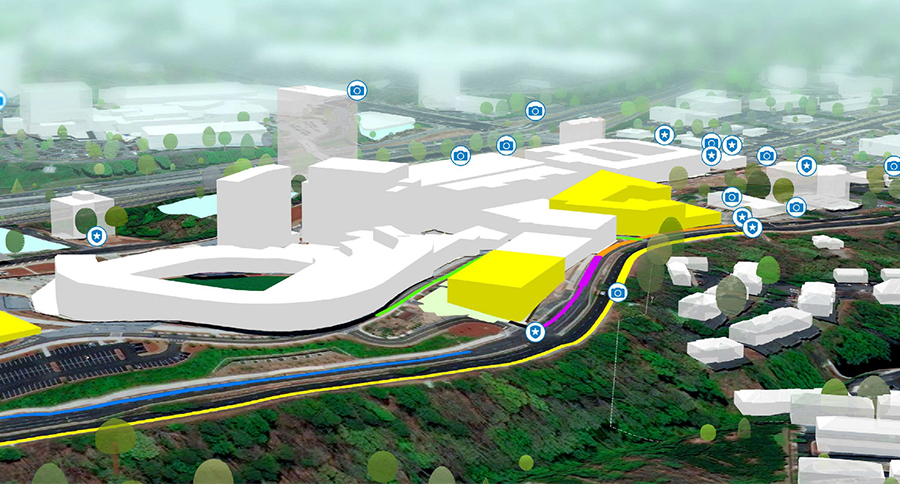
02 Nov Predicting Traffic Patterns and Preventing Traffic Accidents
Anyone who’s attended a large sporting event understands the bittersweet feeling of a come-from-behind win. With thousands of fans engaged to the final whistle, the joy of victory quickly becomes the agony of traffic as throngs of fans emerge from the stadium on a select few paths: to the train station, to the interstate, or to nearby nightlife.
One county in the southeastern United States is using artificial intelligence, the IoT, and location technology to improve that experience. In cooperation with the stadium owner in a large metropolitan area, the county is testing a new system that enlists an intelligent algorithm to monitor street cameras and adjust traffic lights to regulate pedestrian and vehicle flows.
The concept sounds simple, but at both ends of the spectrum it’s deceptively complex. Using human monitors to oversee such large crowds can quickly become inefficient and overwhelming, and trusting the task to technology demands sophisticated machine learning algorithms.
The county and its partners are using trend detection, an advanced form of machine learning, as part of the solution. Unlike the pattern recognition techniques that have earned machine learning its notoriety—including detecting cats and road signs in static images—this technique involves not just snapshots but also images that change over time. In the stadium command center, the machine learning algorithm analyzes real-time video of departing fans and spots areas where crowds are beginning to form. Using location intelligence to understand where traffic lights—connected to the IoT— can be adjusted to ease that congestion, the program makes the necessary adjustments in specific locations while keeping the whole system safe from slowdowns.
The project is an innovative private-public partnership between the county and the stadium owners, both of which have a vested interest in moving pedestrian and vehicle traffic smoothly through the city. Each group brings a critical piece of the puzzle to the machine learning solution: the county’s IoT-based camera network combined with the sport team’s command center and connected infrastructure.
At the heart of this smart-traffic solution is a modern GIS. GIS technology was among the first to incorporate artificial intelligence for predictive capabilities, delivering heat maps to help companies detect areas of improving or declining sales. That predictive prowess is now being combined with new forms of artificial intelligence to enhance companies’ predictive power — and keep crowds moving.
Unleashing GIS Technology’s potential in every industries
